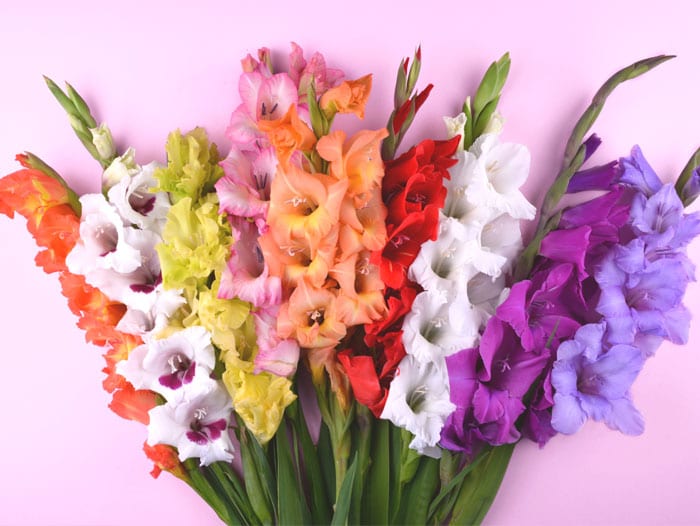The Gladiolus is such a popular summer bulb that flower bulb specialists have appointed it “Summer Bulb of the Year”. These plants introduce color by producing tall spikes covered with flowers and surrounded by sword-shaped leaves. Their rewarding flowers provide unprecedented enjoyment. The sword lily According to botanists, there are around 300 different gladiolus species that come originally from Africa. There, they occur as wild plants growing in their natural environment. They have been cultivated ever since 1941 so anyone can now enjoy them in their gardens. Their botanical name, “Gladiolus” – is the diminutive for the Latin word, Gladius , which means “sword”. Their sword-shaped leaves and the meaning of their botanical name has led to their common name: sword lilies. A corm Gladioli can be recognized by their tall, sturdy, upright stems. Both sides of this stem are covered with flowers that can be almost any color of the rainbow. And they can range from pastels to vivid eye-catching hues. Did you know that a gladiolus isn’t a true bulb, but rather what’s known as a corm? Unlike true bulbs that store their nutrients in layers of scales, corms use their solid fleshy roots as an underground storage organ. Groups Since there are so many different gladioli, there are two classified groups: the large-flowered and the small-flowered varieties. The large-flowered group contains more varieties than the small-flowered one. These are made up of hundreds of varieties in a wide range of colors and color combinations. In general, they are taller than three feet. These varieties include: Butterfly gladioli: their flowers are delicate and their colors contrast with the rest of the plant which give them the appearance of butterflies. They are characterized by alternately arranged flowers, made up of tightly packed petals. The inner petals often display a color different than the outer ones. Primulinus gladioli: the varieties in this group were developed from the yellow Gladiolus primulinus . The plant itself has a narrow silhouette and its uppermost petals cover the stamens beneath. Small-flowering gladioli produce smaller flowers and are not as tall. They are subdivided […]






